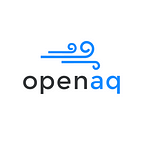The City of Los Angeles (L.A.) is taking action to address air quality. Despite residents breathing easier than they did during the smog-shrouded days of the latter 20th century, levels of fine particulates and ground-level ozone have largely plateaued in recent years and remain dangerous to human health.
Among the initiatives L.A. has undertaken to understand, predict and mitigate air pollution is Predicting What We Breathe (PWWB), a partnership project to increase the accessibility and use of space data and ground-based data by using machine learning to predict air quality in ways that can be acted upon to improve human health. Funded by NASA, the Office of Mayor Karen Bass partnered with California State University Los Angeles (CSULA), OpenAQ and other collaborators.
PWWB has built a highly accurate model for LA County that provides hourly air quality predictions for six pollutants–PM2.5, ozone, CO, CO2, NO, and NO2–at a spatial resolution of 1 km2. The average accuracy for a 24-hour prediction over sites in LA County is more than 94%. Even as far as 10 days in the future, the model maintains a high accuracy rate (more than 72% for NO2 and more than 80% for both ozone and PM2.5 for a 10-day prediction).
Using these predictions, local officials can now issue more timely and effective on-the-ground intervention tactics. And with detailed feedback, they can better understand the impact of their efforts to reduce air pollution.
The predictive model is being expanded (e.g., see PM2.5 forecasts for all of California at City Air Live Air Quality Map) and is available to cities worldwide to help them make better use of NASA and city data to improve health outcomes globally.
The algorithms for the model were developed using artificial intelligence and machine learning applied to satellite observations, ground-level air quality data, meteorological data and wildfire/smoke data. Data from the OpenAQ platform informed development of the algorithm and continues to be used.
“In this project, we have developed advanced artificial intelligence and deep learning models, along with data analytics algorithms,” said Dr. Mohammad Pourhomayoun, project co-investigator and Director of the Artificial Intelligence & Data Science Research Lab at CSULA Department of Computer Science. “This air quality predictive system not only holds immense value for the general public but also serves as a vital resource for local governments and healthcare providers. It enables them to gain profound insights into air quality dynamics and to forecast air quality and air pollution events (such as those caused by a wildfire) in advance. These insights can then be utilized to enhance human health outcomes and environmental justice, and to facilitate more equitable and targeted decision-making.” [For a deeper look at the model, see “Predicting PM2.5 atmospheric air pollution using deep learning with meteorological data and ground-based observations and remote-sensing satellite big data,” published in Air Quality, Atmosphere & Health.]
With assistance from OpenAQ, the PWWB team held an international workshop engaging C40 cities. Mexico City, Durban and London presented their work to address air quality and their use of the PWWB model for their own forecasts. At the International Astronautical Congress in Dubai, the project engaged African sister cities. CSULA is now supporting New Delhi, San Francisco and Sydney in using the algorithm to develop their own models.
PWWB has actively engaged with vulnerable communities and built educational tools for youth to participate in learning more about the impacts of air pollution. PWWB provided air sensors to community-based projects and held a community workshop co-organized by OpenAQ; worked with the L.A. Public Library on a citizen science project where patrons can check out a kit to monitor air quality; and developed Air Quality educational augmented reality missions, ‘Learning What We Breathe’ and ‘MYCCA Air Quality Mission’ on the Agents of Discovery augmented reality mobile app platform. The missions are set up in L.A. Recreation and Park locations and the L.A. State Historic Park. In partnership with Wonders of Wildlife National Museum and Aquarium, a member of L.A. Youth Council for Climate Action presented a Mission Conservation Agent Briefing on air pollution.
“Everyone deserves to have the information they need to live healthy lives in places that are impacted by pollution, and increasing awareness of air quality goes hand in hand with other adaptations that will be necessary to respond to the climate crisis. We will continue to offer solutions to help mitigate the impacts of pollution in communities that are disproportionately impacted,” said Deputy Mayor Matthew Hale, Office of Finance, Operations & Innovation, City of Los Angeles.
PWWB was funded by a grant from NASA’s Earth Science Technology Office, and related work continues with new funding. One goal is to develop a global digital twin to understand the impact of transportation on air quality and simulate the amount of greenhouse gases created by cars and trucks. Another goal is to further identify and support the neighborhoods and communities in L.A. that face higher exposure and harm from air pollution and provide environmental justice organizations serving those communities with more information and targeted air quality data tools to support their health.
OpenAQ is proud to support PWWB. We encourage large cities interested in applying the model to forecast their own air quality to email airquality<at>lacity.org for more information.
